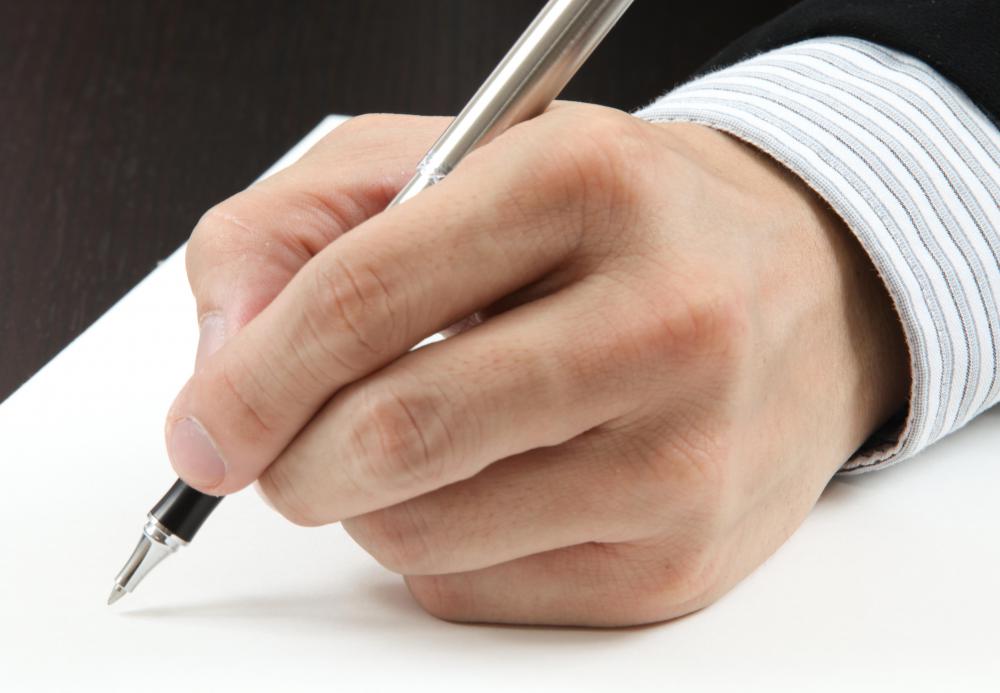At WiseGEEK, we're committed to delivering accurate, trustworthy information. Our expert-authored content is rigorously fact-checked and sourced from credible authorities. Discover how we uphold the highest standards in providing you with reliable knowledge.
What is a Forensic Document Examiner?
A forensic document examiner studies all aspects of a document to determine its authenticity and origin, including handwriting, typewriting, fingerprinting, commercial printing, photocopies, inks and papers. Analysts look for clues that point to forgery like alterations, deletions, additions and substitutions within the document. If found, analysts also try to determine where the forgery originated by pinpointing unique characteristics. Some of the most frequently examined documents examined by analysts include wills, medical records, deeds, time sheets, insurance policies, income tax records, loan agreements, contracts, checks, election petitions and letters that have no identified authors.
Forensic document examiners prefer to work with documents that have been preserved in their original form. The reason for this is because writing details can be lost when documents are copied or otherwise reproduced, as through fax. However, examination of copies may be conducted if the copy is high-quality and the particular case allows for it. Depending on the examiner and the document, a high-resolution scan may be considered a suitable sample.

Before examining a document, an analyst may look for another document with which to compare to the original. Analysts attempt to find a valid, second document that closely resembles the original in terms of style, print and case. The closer the second document resembles the first, the more likely it is that the forensic document examiner will conclude his study with satisfactory results.
Despite the myriad of details that can be ascertained by a forensic document examiner, age, gender and the hand with which a person writes cannot be determined. Similarly, while a forensic document examiner can identify a document as a forgery, pinpointing the identity of the forger is less likely to occur. Forensic document examiners can also analyze documents that have been written in foreign languages. However, this requires that the analyst be familiar with the particulars of the language and the writing style in it. For example, distinguishing strokes vary between languages.
The most important training forensic document examiner undergoes takes place by the side of another, established forensic document examiner. This hands-on training is essential for any potential analyst, as a large part of the job is being able to know the difference between the variations of one person's handwriting and the differences between two different people's handwriting. A forensic document examiner should not be confused with a graphologist. The latter studies handwriting and attempts to uncover personality traits within it.
AS FEATURED ON:
AS FEATURED ON:











Discuss this Article
Post your comments